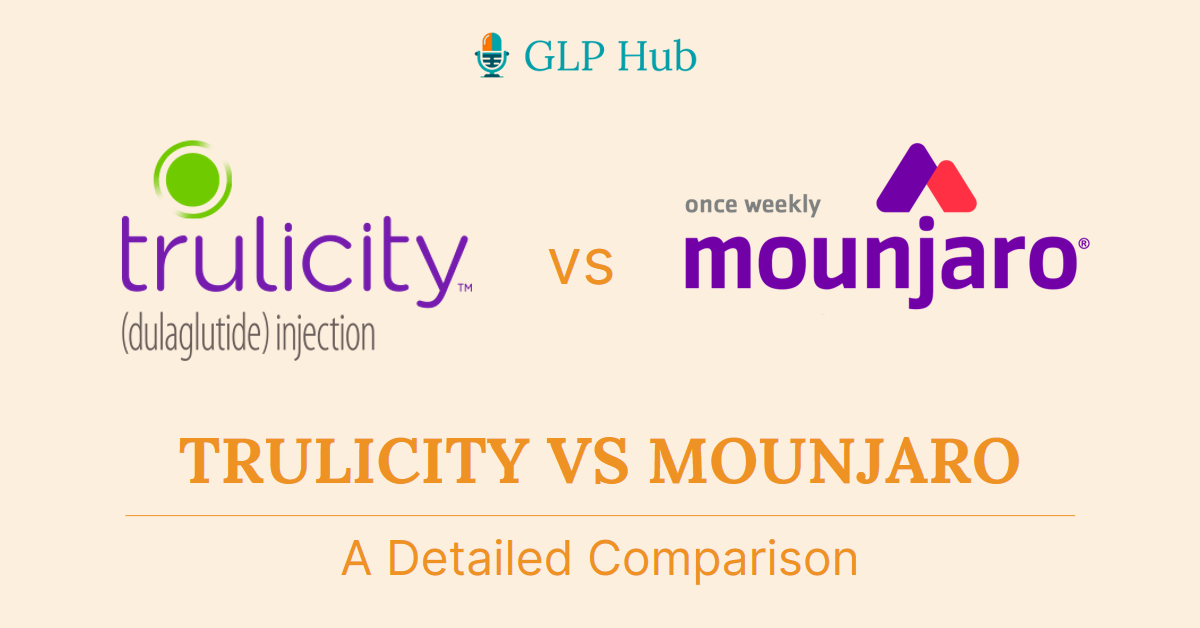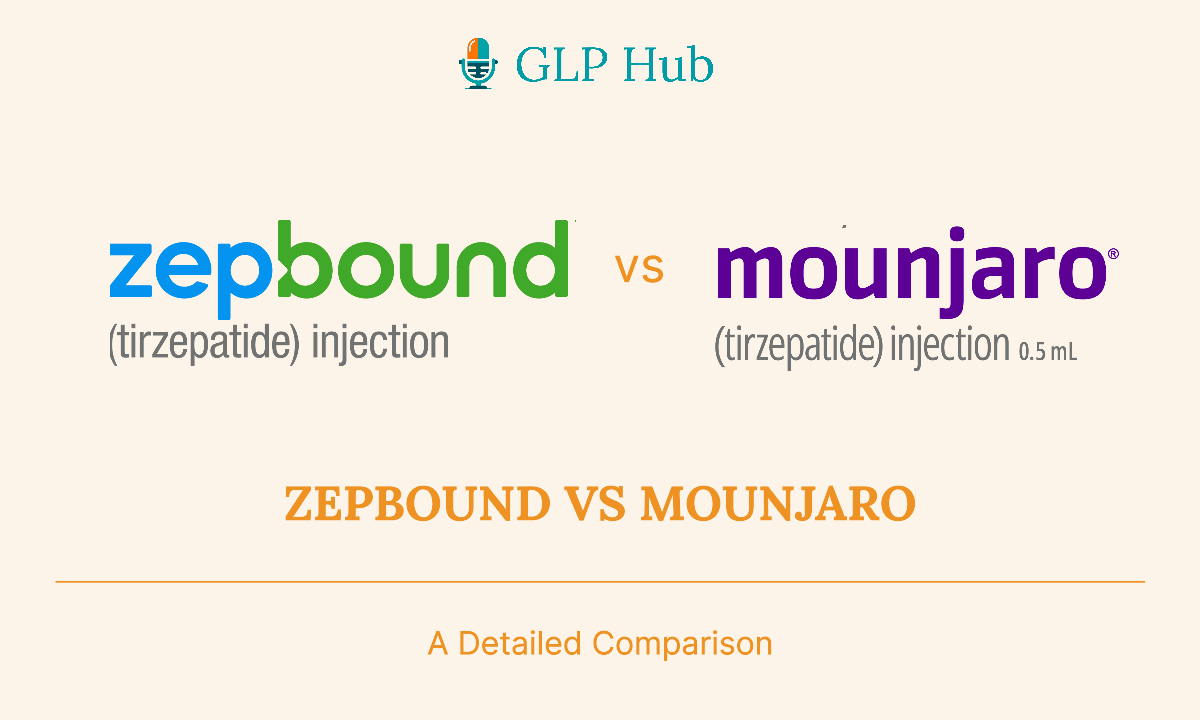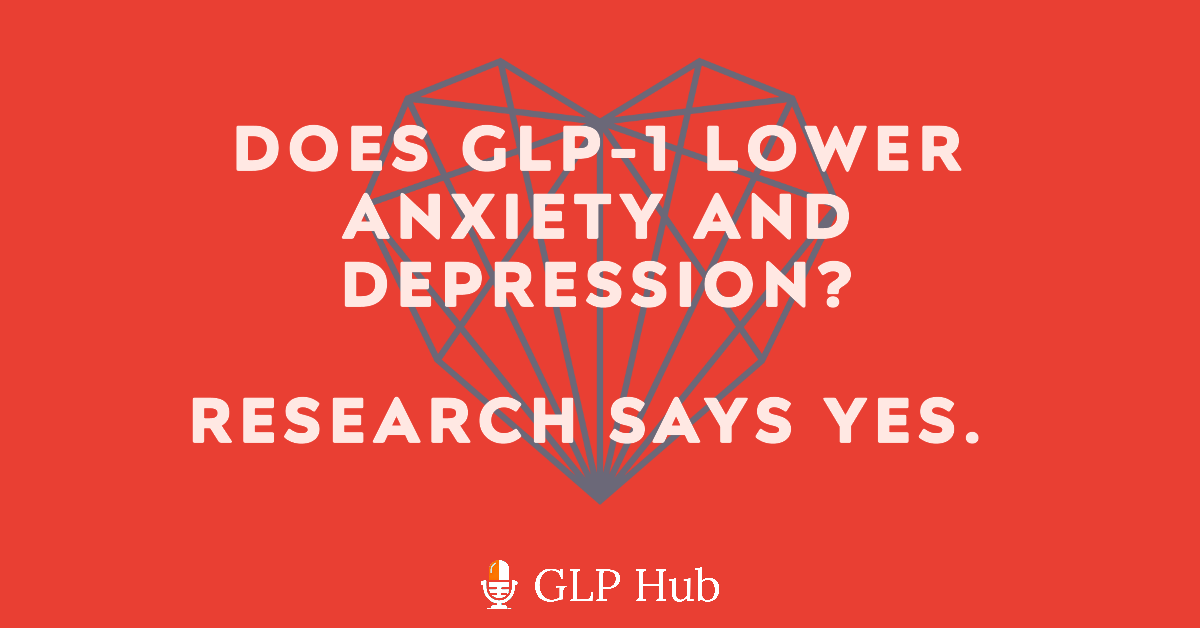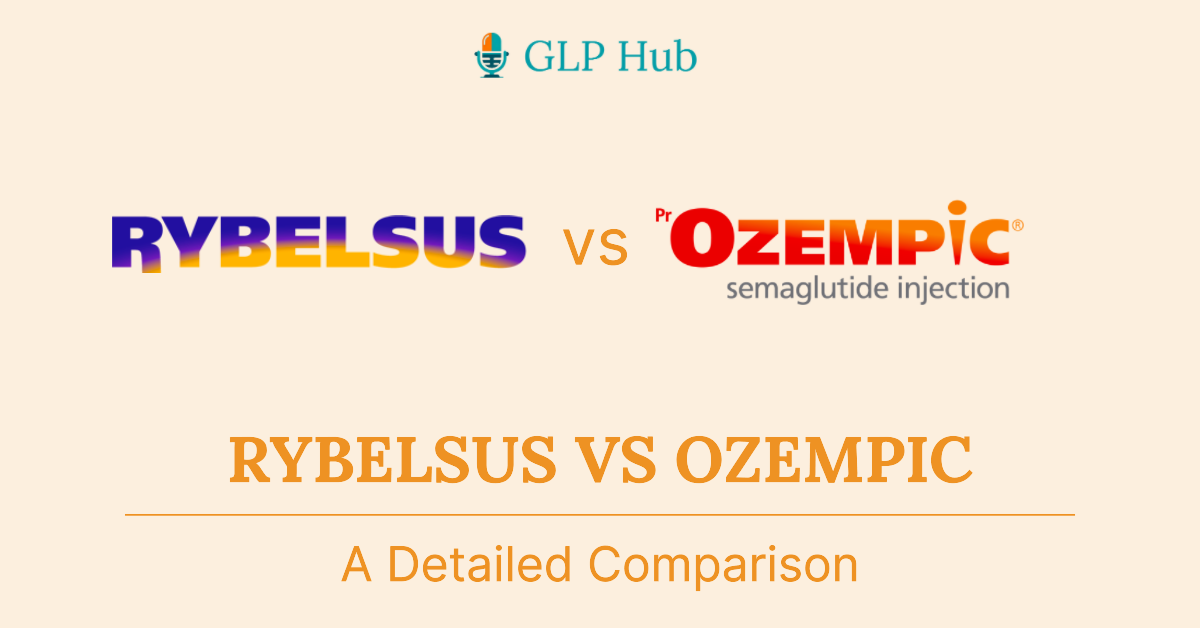With all the talk about Trulicity and Mounjaro lately, you’re probably wondering how they stack up for weight loss. Both are hot new drugs that help your body regulate blood sugar and insulin to curb cravings and drop pounds. But which one is right for you?
Let’s dig into the details on these two rising stars so you can make an informed decision. We’ll compare effectiveness, side effects, costs, and other key factors. Whether you’re newly diagnosed with diabetes or simply struggling with those stubborn last ten pounds, this breakdown has everything you need to determine if Trulicity or Mounjaro is the better fit for your weight loss goals and health needs.
How Trulicity and Mounjaro Work for Weight Loss
Trulicity and Mounjaro are injectable medications that work in similar ways to help with weight loss. Both are in a class of drugs called GLP-1 receptor agonists that mimic the effects of a hormone called glucagon-like peptide-1 (GLP-1).
GLP-1 helps control blood sugar levels by stimulating your pancreas to produce insulin when blood glucose is high, especially after eating. It also slows digestion and helps make you feel full sooner, reducing your appetite. Trulicity and Mounjaro activate the same receptors as natural GLP-1, which is why they lead to weight loss as a side effect.
Appetite Suppression
These medications curb your appetite by slowing stomach emptying and increasing feelings of fullness after eating small amounts of food. This can help you eat less and cut excess calories, which aids weight loss over the long run.
Slower Digestion
Trulicity and Mounjaro also slow the rate at which your stomach empties food into the intestines. This delays the absorption of nutrients into the bloodstream and prolongs the feeling of satiety after a meal. Your body has more time to register that you’ve eaten, so you’ll feel less hungry for a longer time.
Improved Blood Sugar Control
By stimulating insulin release and lowering blood sugar spikes, especially after carb-heavy meals, Trulicity and Mounjaro provide tighter glycemic control. This can indirectly promote weight loss since high blood sugar is linked to difficulty losing excess pounds. Tighter control also reduces health risks like heart disease that can accompany obesity or excess weight.
In summary, both Trulicity and Mounjaro tap into your body’s own appetite and blood sugar regulating systems to help you eat less, stabilize your glucose levels, and drop those extra pounds. The medications work in similar ways but have different dosages and frequencies. Talk to your doctor about which option may suit your needs best based on your health conditions and weight loss goals.
Trulicity vs Mounjaro: Key Differences
When deciding between Trulicity and Mounjaro, the main differences to consider are how they’re taken, side effects, and cost.
Administration
Trulicity is injected once weekly, while Mounjaro is taken twice weekly. Mounjaro also has an auto-injector pen option that may be more convenient for some. Both come in pre-filled pens to inject under the skin.
Side Effects
The most common side effects for both are nausea, diarrhea, and vomiting. However, Mounjaro may cause constipation and abdominal pain more frequently. Trulicity can also cause dizziness upon standing due to low blood sugar. The risks are relatively similar, so you’ll want to discuss your medical history with your doctor to determine which may be better tolerated.
Cost
Mounjaro is the newer drug, so it tends to cost more. The exact price will depend on your insurance coverage and dosage. Trulicity also has generic options available called dulaglutide that can help reduce cost. Your insurance provider can give you an estimate of what your out-of-pocket costs may be for either medication to help determine the most budget-friendly choice for your situation.
In summary, while Trulicity and Mounjaro work in similar ways to improve blood sugar control and aid weight loss, the differences in frequency of use, side effects, and cost are factors to weigh based on your preferences and circumstances. Discussing the pros and cons of each medication with your doctor can help determine which is the better fit for your needs. The right choice for you comes down to balancing effectiveness, tolerability, and affordability.
Efficacy Comparison: Weight Loss Results
For weight loss, Mounjaro seems to have a clear advantage over Trulicity based on clinical trial results. In studies, Mounjaro led to greater average weight loss in patients with Type 2 diabetes compared to Trulicity.
Those taking Mounjaro lost an average of 13% of their body weight after 52 weeks of treatment. This amounts to about 30 pounds for someone weighing 230 pounds. In contrast, Trulicity patients only dropped around 1% of their body weight, equaling just 2-3 pounds of loss for the same 230-pound person.
Difference #1 between Trulicity vs Mounjaro: Weight Loss Efficacy
For weight loss, Mounjaro seems to have a clear advantage over Trulicity based on clinical trial results.
Those taking Mounjaro lost an average of 13% of their body weight after 52 weeks of treatment. In contrast, Trulicity patients only dropped around 1% of their body weight.
Mounjaro works by activating brain receptors involved in appetite regulation and food intake control. By influencing these areas, it can decrease appetite and reduce hunger, which often leads to eating less and weight loss over time. Trulicity does not directly target the mechanisms involved in appetite and hunger that Mounjaro does.
Mounjaro comes with some temporary yet uncomfortable side effects like nausea, diarrhea, and vomiting – especially when first starting treatment or increasing the dosage. These side effects tend to subside over time for most people. The more significant weight loss potential with Mounjaro may be worth tolerating the initial side effects for some. You should speak to your doctor about strategies to minimize side effects.
In the end, if maximizing weight loss is your top priority, Mounjaro could be the best option. However, if you want a medication with minimal side effects and are satisfied with modest weight loss, Trulicity may be a good fit. Discuss the pros and cons of each medication carefully with your doctor to determine what is right for your situation.
Side Effects: Trulicity vs Mounjaro
When it comes to side effects, Trulicity and Mounjaro have some similarities as well as differences to be aware of.
Nausea and vomiting
A common side effect for both Trulicity and Mounjaro is nausea, vomiting or even diarrhea, especially when you first start taking the medication or increase your dose. These side effects are usually temporary, but can be minimized by taking the injection with food, starting with a lower dose and gradually increasing, or switching the time of day you take your medication.
Hypoglycemia
Low blood sugar (hypoglycemia) is a possibility with both drugs, although less likely with Mounjaro. The risk is higher if you are also taking other diabetes medications. Monitor your blood sugar levels, especially when starting or changing doses. Mild hypoglycemia can be treated by consuming glucose tablets or a sugary snack. For severe hypoglycemia, seek medical help immediately.
Pancreatitis
There is a small risk of developing pancreatitis, or inflammation of the pancreas, with both semaglutide (Mounjaro) and dulaglutide (Trulicity). Seek medical attention immediately if you experience severe abdominal pain. The risk seems to be slightly lower with Mounjaro based on clinical trial data.
Allergic reactions
Rare, but serious allergic reactions are possible with both medications. Seek emergency care immediately if you experience symptoms like swelling of the face, tongue and throat or hands and feet, severe rash, or dizziness and trouble breathing.
Mounjaro may cause additional side effects like diarrhea, fatigue, decreased appetite and indigestion. Trulicity can also lead to symptoms such as headache, upper respiratory tract infection, back pain and injection site reactions. The risks of side effects seem slightly lower with Mounjaro overall based on clinical studies. However, results can vary from person to person.
Difference #2 between Trulicity vs Mounjaro: Side Effects
Mounjaro may cause additional side effects like diarrhea, fatigue, decreased appetite and indigestion.
Trulicity can lead to symptoms such as headache, upper respiratory tract infection, back pain and injection site reactions.
The risks of side effects seem slightly lower with Mounjaro overall based on clinical studies.
Discuss the risks and benefits of both medications in detail with your doctor. By starting at a low dose and gradually increasing, many side effects can be reduced or avoided. Lifestyle changes like diet and exercise along with regular blood sugar monitoring can also help minimize risks. The right choice for you will depend on your medical history, current health conditions and treatment goals.
Administration and Dosing: Subcutaneous Injections
Both Trulicity and Mounjaro are administered through subcutaneous injection, meaning you inject the medication into the fatty tissue just under your skin. The injections are typically done in your abdomen, thigh, or upper arm.
Trulicity Dosing
Trulicity is injected once weekly. The starting dose is 0.75 mg, which can be increased to 1.5 mg or 3 mg depending on your needs and tolerance. The higher doses tend to lead to more weight loss. It may take several weeks of use to reach the full effect.
Mounjaro Dosing
Mounjaro also has a once-weekly injection schedule. The starting dose is 2.5 mg, which can be increased to 5 mg, 7.5 mg or 10 mg. Similar to Trulicity, the higher doses of Mounjaro often result in more weight loss over time. It can also take several weeks of use for Mounjaro to have its full weight loss effects.
- The doses for both medications should be increased gradually to minimize side effects.
- Never mix the two drugs or change your dose without consulting your doctor.
- Be very careful not to accidentally inject an overdose, as this could cause severe side effects.
Self-Administering the Injections
- The injections are meant to be self-administered after receiving proper training from your doctor or nurse.
- Make sure you understand how to properly handle and inject the medication before starting treatment.
- Dispose of used needles in a puncture-proof container and keep all medications out of the reach of children.
- Store unopened medication in the refrigerator. Opened Trulicity pens can be left at room temperature for up to 14 days, while opened Mounjaro pens must be discarded after 8 days.
By carefully following the instructions provided by your doctor and properly self-administering these once-weekly injections, you’ll be on your way to achieving the weight loss benefits these medications can provide. Be sure to report any severe or persistent side effects to your doctor right away. Consistency and patience are key—it can take time for these drugs to have their full effects.
Cost and Insurance Coverage Comparison
When deciding between Trulicity and Mounjaro, cost and insurance coverage are major factors for most people. Both drugs can be expensive, especially if you’re paying out of pocket. However, there are ways to reduce the costs and pay little to nothing for either medication.
Mounjaro has a list price of over $1,000 for a one month supply. However, Eli Lilly, the maker of Mounjaro, offers a savings program that can lower your out-of-pocket costs to as little as $25 per prescription. The actual amount you’ll pay depends on your insurance coverage and eligibility for the savings program.
Trulicity costs around $930 per month at list price. However, with most insurance plans, including Medicare, you’ll pay between $0 to $30 for a month’s supply. For those on Medicaid, Trulicity typically ranges from $4 to $9 per month. Some private insurances cover Trulicity completely or charge a small copay. Check with your insurance provider to determine your out-of-pocket costs for either medication.
If cost is a concern, here are some tips to reduce your expenses:
- Use a prescription savings card. Both Eli Lilly and Novo Nordisk offer savings cards that can take 50-75% off the retail price.
- Buy generic. Once available, generic versions of these medications will likely have lower costs. However, there are currently no generic options for Trulicity or Mounjaro.
- See if you qualify for patient assistance programs. These programs provide low-income or uninsured patients with free or low-cost medications. You’ll need to meet certain income requirements to qualify.
- Talk to your doctor about lower-cost alternatives. There may be other GLP-1 agonists or diabetes medications that are more affordable and suitable for your situation.
- Shop around at different pharmacies. Prices can vary between pharmacies, so compare costs at retail pharmacies like CVS or Walgreens versus wholesale clubs like Costco or Sam’s Club. You may be able to save up to 50% by switching pharmacies.
In summary, while Trulicity and Mounjaro can be pricey, there are ways to cut your costs and possibly get one of these medications for little to no out-of-pocket expense. Do some research on your options and talk to your doctor to determine the most affordable solution based on your insurance coverage and financial situation.
Which Is Better for Me? Factors to Consider
When deciding between Trulicity and Mounjaro for weight loss, there are several factors to keep in mind regarding which may suit your needs best:
Efficacy for Weight Loss
Both Trulicity and Mounjaro have been shown to produce weight loss, around 3-7% of total body weight over 6-12 months. Mounjaro may have a slight edge, with some studies showing average weight loss of up to 15-22 pounds (7-10% of weight). However, results can vary from person to person based on factors like diet, exercise, dosage, and duration of use.
Side Effects
As with any medication, both Trulicity and Mounjaro can cause side effects like nausea, diarrhea, and headaches. Mounjaro tends to have fewer gastrointestinal side effects, which some patients may prefer. However, Trulicity has been on the market longer, so its side effect profile is better established. Discuss any concerns you have about side effects with your doctor before starting treatment.
Cost and Insurance Coverage
Cost may also play a role in your decision. Trulicity is available as a generic, making it typically cheaper. Mounjaro is newer, so it is only available as a brand name drug at this time, which usually means higher out-of-pocket costs. Check with your insurance provider about specific coverage and costs for these medications. Coupons and patient assistance programs may also help reduce your expenses.
Dosing and Administration
Both drugs are taken as an injection once weekly. Mounjaro has a dosing pen that some may find easier to use, while Trulicity comes in a pre-filled syringe. Mounjaro also has the option for higher doses, up to 15 mg, which could be beneficial for some patients. Discuss with your doctor which medication and dosage is right based on your weight loss needs and goals.
The choice between these two effective weight loss drugs comes down to your specific situation and priorities. Speaking with your doctor about the factors that matter most to you can help determine whether Trulicity or Mounjaro is the better option for achieving your weight loss targets.
FAQs
Here are some of the most frequently asked questions to help you decide which drug may be right for you.
How do Trulicity and Mounjaro work for weight loss?
Both Trulicity and Mounjaro are injectable medications that work by activating receptors in your body that regulate blood sugar and appetite. They help make you feel full faster so you eat less, which can lead to weight loss over time. The effects tend to be gradual, about 1 to 2 pounds per week.
How much weight can I expect to lose on Trulicity and Mounjaro?
In clinical trials, people lost an average of 3% to 8% of their body weight over 6-12 months using either Trulicity or Mounjaro. The amount of weight you can lose depends on several factors like your current weight, diet, exercise level, dosage, and how long you use the medication. Most people lose the most weight in the first 6-12 months, then it slows down.
What are the side effects of Trulicity and Mounjaro?
The most common side effects of both drugs are nausea, diarrhea, vomiting, and low blood sugar. However, these tend to be mild to moderate and often go away over time. Rare but serious side effects can include pancreatitis, gallbladder problems, and severe hypoglycemia. You’ll need to be monitored regularly by your doctor.
How are the injections administered and how often?
Both Trulicity and Mounjaro are self-injected once weekly. Trulicity comes in a prefilled pen or syringe, while Mounjaro comes in an auto-injector pen. Your doctor will show you how to properly inject yourself before you start the medication. The injections are usually given in the abdomen, thigh, or upper arm.
How much do Trulicity and Mounjaro cost?
Trulicity and Mounjaro can be expensive, ranging from $500 to $1500 per month without insurance. The exact price will depend on your dosage and whether you use a coupon or discount card. Insurance coverage and copays will also vary depending on your specific plan. Talk to your doctor about ways to lower the cost so the medication remains affordable for you.
Conclusion
So there you have it. Trulicity and Mounjaro are both effective diabetes drugs that can also help you lose weight. But Mounjaro seems to have some advantages when it comes to weight loss specifically. It produces more dramatic results in a shorter time for many people. However, it also comes with an increased risk of side effects. Trulicity may produce more modest weight loss overall but has a better safety profile.
As with any medication, you’ll have to weigh the risks against the benefits for your particular situation. Talk to your doctor about whether Trulicity or Mounjaro is likely to be the better fit for helping you meet your weight loss goals. The most important thing is that you have options to explore with your healthcare provider.





